Here I am using black embroidery floss on white linen. Many thanks to my sister for taking pictures over my shoulder so you can see my hands as you would see your own if you were sewing. I am right handed, so I'm manipulating the needle with my right hand and guiding the thread with my left. If you're left-handed, set a mirror at a 45 degree angle to your computer, and look at the mirror images. In the pictures below, the edging I'm sewing already has six finished shell stitches, and I'm working on the seventh.
Practice a few times on scrap fabric to become consistent in size and tension before working on your project.
0 Comments
Leave a Reply. |
Karen Roy
Quilting, dressmaking, and history plied with the needle... Sites I EnjoyThe Quilt Index Categories
All
Archives
March 2024
|

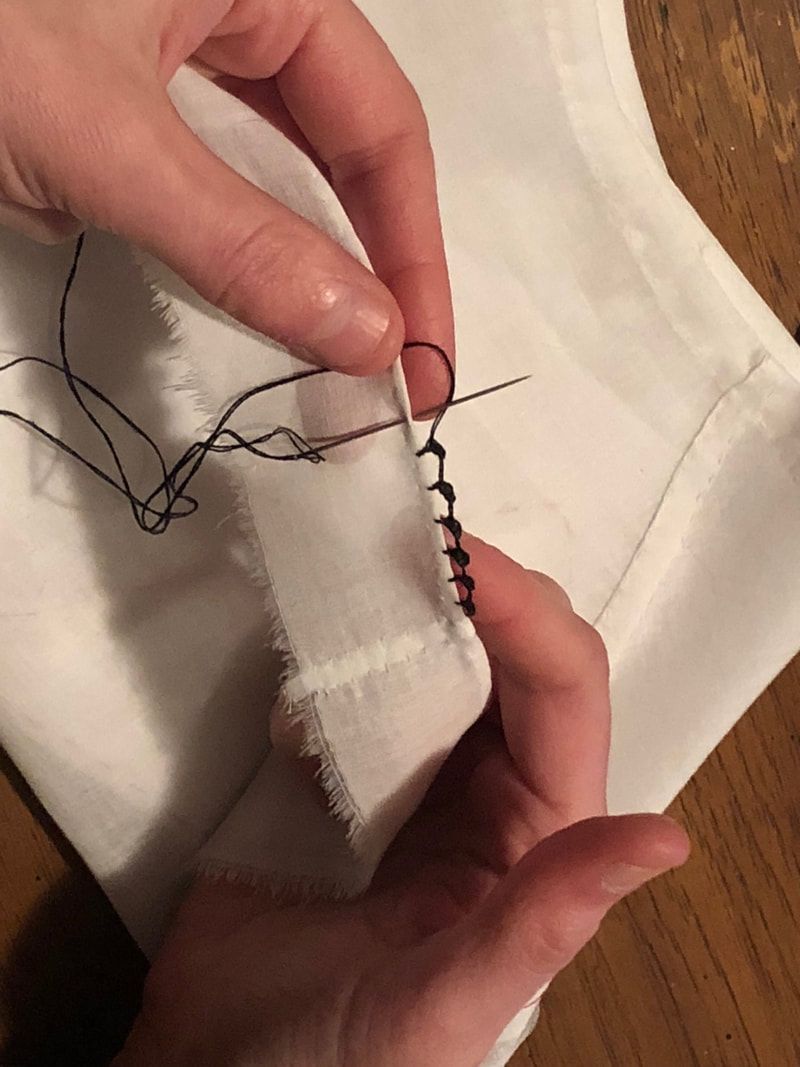
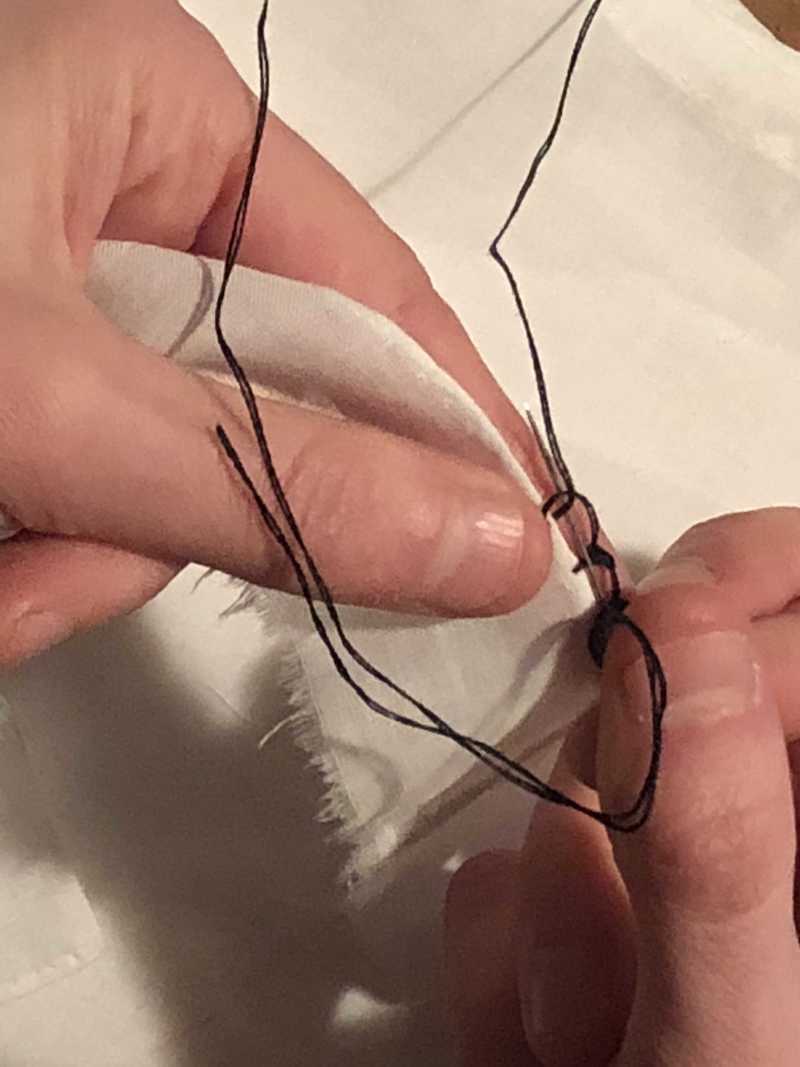
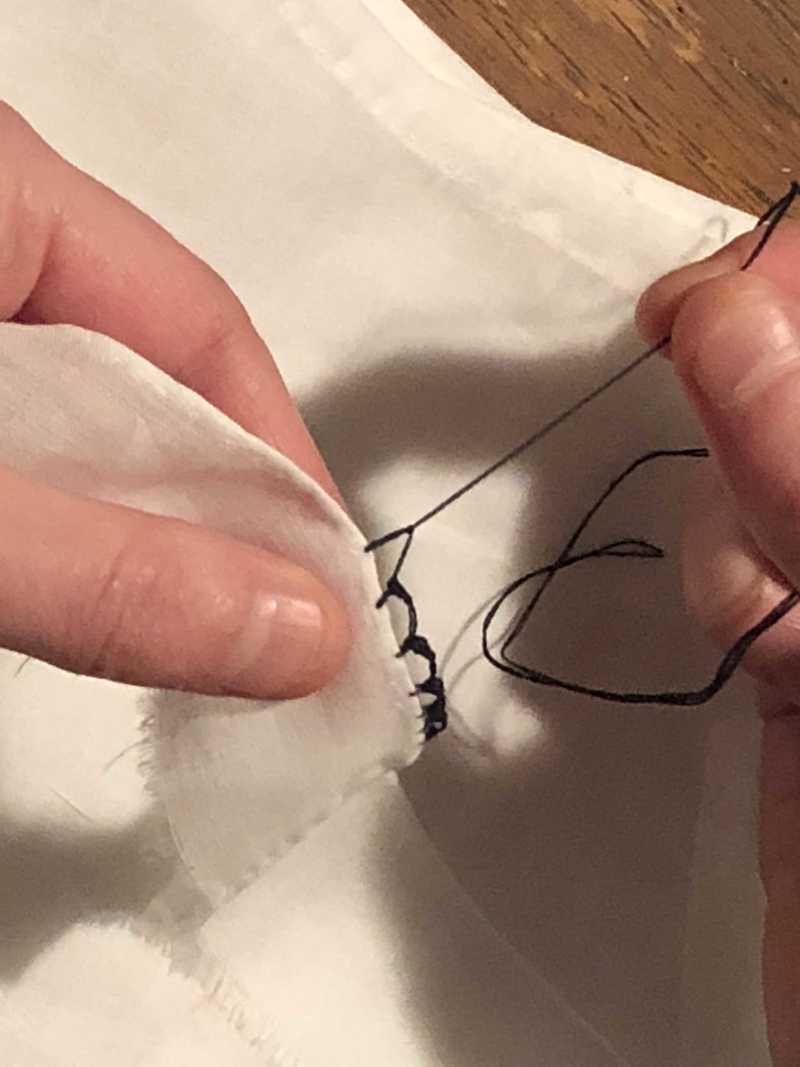
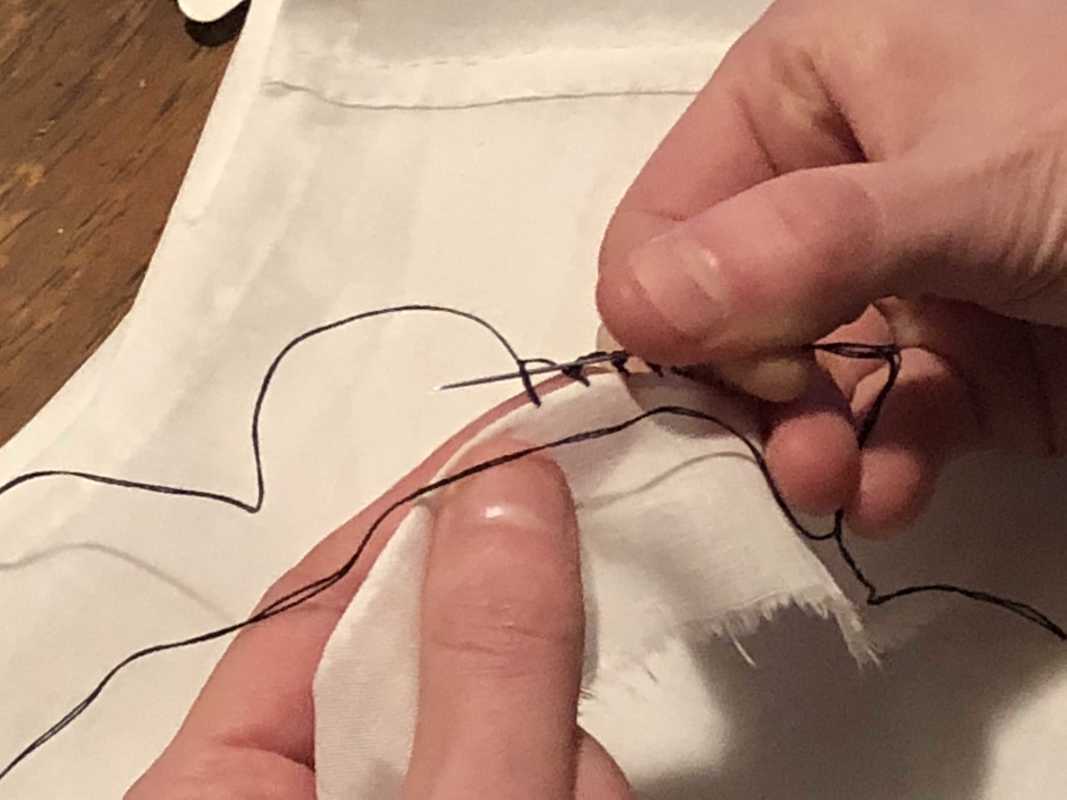
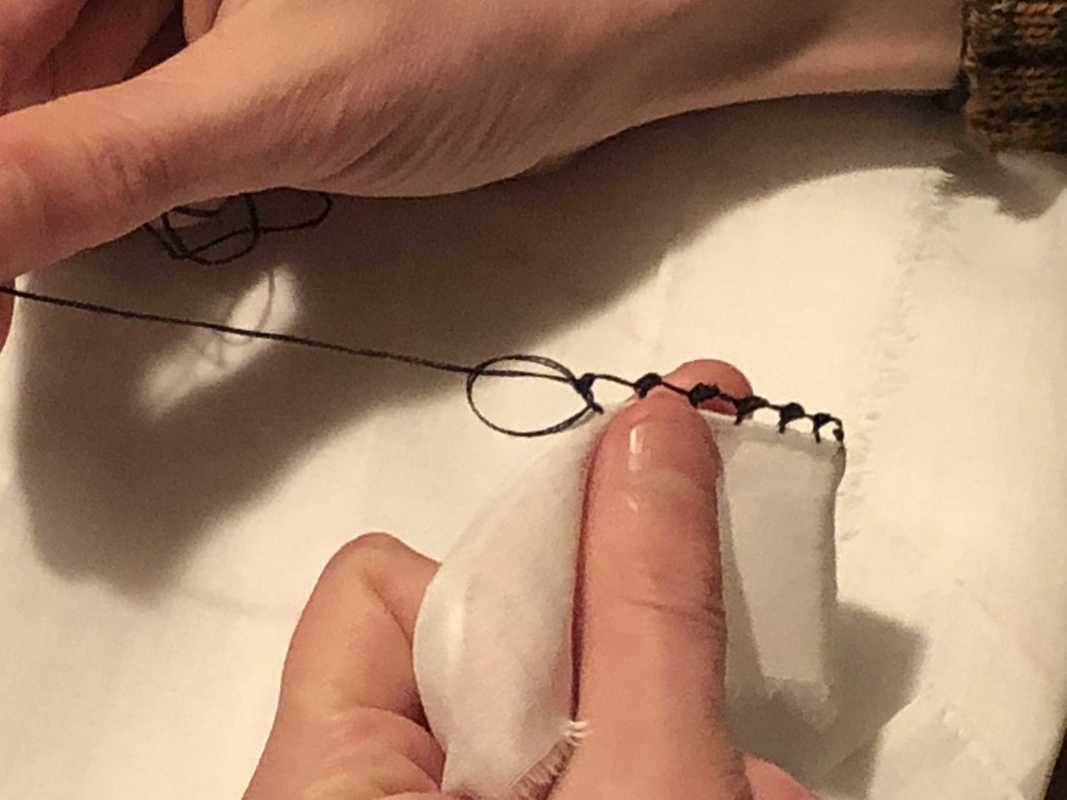
 RSS Feed
RSS Feed